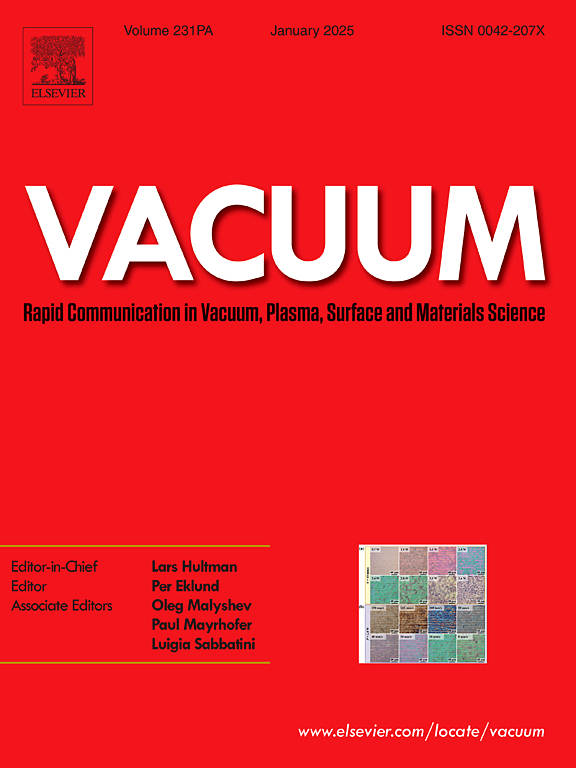Probing into the low efficiency of CdS/SnS-based solar cells and remediation through surface treatments
IF 3.9
2区 材料科学
Q2 MATERIALS SCIENCE, MULTIDISCIPLINARY
引用次数: 0
Abstract
Tin sulfide (SnS) is a highly promising photovoltaic absorption material in thin-film solar cells with abundant reserves, environmental friendliness, low cost and long-term stability. An efficiency of up to 4.8 % has been achieved for SnS absorber/CdS heterojunction solar cells where the CdS buffer layer is usually obtained by chemical bath deposition. However, current CdS/SnS devices often suffer from severe interface recombination loss, which deteriorates device performance. This report focuses on the CdS film surface to identify performance-degrading factors for CdS/SnS-based solar cells. XRD and XPS reveal numerous oxides on freshly fabricated CdS films increasing surface roughness and reducing conductivity. Herein, a method based on ammonium sulfide (AS) chemical treatment is proposed, which can effectively reduce the oxide content on the surface of CdS and optimize the band alignment, leading to the facilitation of charge carrier transport and the suppression of interface recombination. Consequently, the PCE of the FTO/CdS/SnS/Ag device is enhanced about three times (from 0.18 % to 0.47 %) with excellent moisture stability.
探究 CdS/SnS 太阳能电池的低效率以及通过表面处理进行补救
硫化锡(SnS)具有储量丰富、环境友好、成本低廉和长期稳定等特点,是薄膜太阳能电池中极具潜力的光电吸收材料。SnS吸收体/CdS异质结太阳能电池的效率最高可达4.8%,其中CdS缓冲层通常通过化学沉积获得。然而,目前的 CdS/SnS 器件往往存在严重的界面重组损耗,从而降低了器件的性能。本报告重点关注 CdS 薄膜表面,以找出导致基于 CdS/SnS 太阳能电池性能下降的因素。XRD 和 XPS 显示,新制造的 CdS 薄膜上存在大量氧化物,增加了表面粗糙度,降低了导电性。本文提出了一种基于硫化铵(AS)化学处理的方法,可有效降低 CdS 表面的氧化物含量并优化带排列,从而促进电荷载流子传输并抑制界面重组。因此,FTO/CdS/SnS/Ag 器件的 PCE 提高了约三倍(从 0.18 % 提高到 0.47 %),并具有出色的湿度稳定性。
本文章由计算机程序翻译,如有差异,请以英文原文为准。
求助全文
约1分钟内获得全文
求助全文
来源期刊

Vacuum
工程技术-材料科学:综合
CiteScore
6.80
自引率
17.50%
发文量
0
审稿时长
34 days
期刊介绍:
Vacuum is an international rapid publications journal with a focus on short communication. All papers are peer-reviewed, with the review process for short communication geared towards very fast turnaround times. The journal also published full research papers, thematic issues and selected papers from leading conferences.
A report in Vacuum should represent a major advance in an area that involves a controlled environment at pressures of one atmosphere or below.
The scope of the journal includes:
1. Vacuum; original developments in vacuum pumping and instrumentation, vacuum measurement, vacuum gas dynamics, gas-surface interactions, surface treatment for UHV applications and low outgassing, vacuum melting, sintering, and vacuum metrology. Technology and solutions for large-scale facilities (e.g., particle accelerators and fusion devices). New instrumentation ( e.g., detectors and electron microscopes).
2. Plasma science; advances in PVD, CVD, plasma-assisted CVD, ion sources, deposition processes and analysis.
3. Surface science; surface engineering, surface chemistry, surface analysis, crystal growth, ion-surface interactions and etching, nanometer-scale processing, surface modification.
4. Materials science; novel functional or structural materials. Metals, ceramics, and polymers. Experiments, simulations, and modelling for understanding structure-property relationships. Thin films and coatings. Nanostructures and ion implantation.
 求助内容:
求助内容: 应助结果提醒方式:
应助结果提醒方式:


